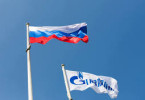Home / Natural Gas /
The law that puts us in Gazprom’s hands
by Dumitru Chisalita
The Russians are often considered as the greatest threat to the Romanian gas market. We have almost never seen our own blame. On 13 January 2016 were published the Methodological Norms for the application of the Tax Code, which extend GO 7/2013 on the establishment of the tax on additional revenues obtained as a result of price deregulation in the natural gas sector until 31 December 2016. The absence of any minimum impact analysis of extending a legislation designed in 2013 until 2016 shows the incapacity to generate a policy favorable to Romania. A minimum analysis of Ordinance’s content and of the reality of the moment would have highlighted that this extension may determine an important blockage in the Romanian gas market and favoring the penetration in the Romanian market of imported gas. Thus, an analysis of the Vienna Gas Exchange shows that on 13 January 2016 (date of approval of GO 7/2013 extension):
- the gas price on the exchange was RON 67.99/MWh
- the gas price on the futures market estimated for February 2016 was RON 62.66/MWh
- the gas price on the futures market estimated for March 2016 was RON 62.14/MWh
- the gas price on the futures market estimated for April 2016 was RON 61.87/MWh
- the gas price on the futures market estimated for Q2/2016 was RON 58.72/MWh
- the gas price on the futures market estimated for Q3/2016 was RON 58.27/MWh
- the gas price on the futures market estimated for Q4/2016 was RON 62.10/MWh
Given that all this gas traded is mostly gas from Russian origin, i.e. the same gas found at the import gates of Romania, there is a possibility that as of April 2016 to have in Romania gas at the price of RON 64-70/MWh (taking into account the tariff for the reservation of capacity in import points). The implementing rules of the Fiscal Code (GD 1/2016), which established only the extension of application of GO 7/2013 until 31 December 2016, in fact provides that the price of natural gas from domestic production relating to the quantities traded in the competitive market for non-household consumers cannot be lower than RON 72/MWh. If the price of imported gas reached values of RON 64-70/MWh, imported gas could flood the Romanian market and, in theory, could stop the domestic production, as Romanian producers wouldn’t be allowed to sell gas at less than RON 72/MWh. It should be mentioned that Romania has a large enough technical import capacity so as to meet the entire gas consumption, only by using imported gas. It was proven once again the lack of understanding of the role of certain policies, throwing absurd obligations and not analyzed in terms of impact they create. The overnight apparition of this extension of the application of GO 7/2013 (amended by GEO 13/2014) proves non-sustainability of the proposed project. In ANRE studies, which justified gas price increase during 2013-2014, there were references to price of imported gas and gas prices at European hubs, which had greater values than in Romania. When prices on the European exchanges or from import fell, these references are no longer taken into account. No analyzes, impact studies, risk analyzes etc. are made in Romania to prepare a better future, making decisions (from other considerations) and subsequently drawing up certain documents, called “analyzes” with the single purpose of covering the decision already made. All this approach does is to find us continuously unprepared, to determine us to act only after the effects is produced and throw the blame on the Russians.
Romanian version: http://dumitruchisalita.ro/2016/03/13/legea-care-ne-da-pe-mana-gazprom/



Recent Comments